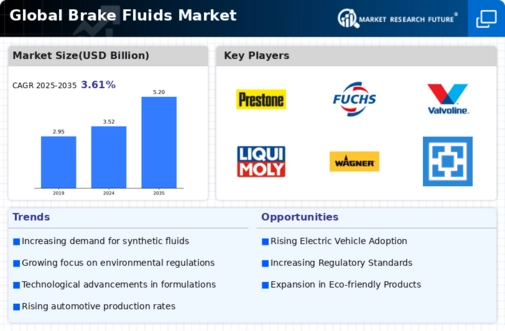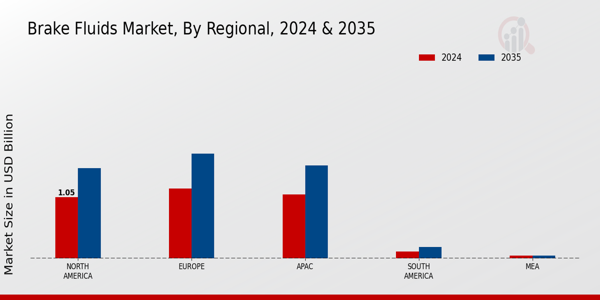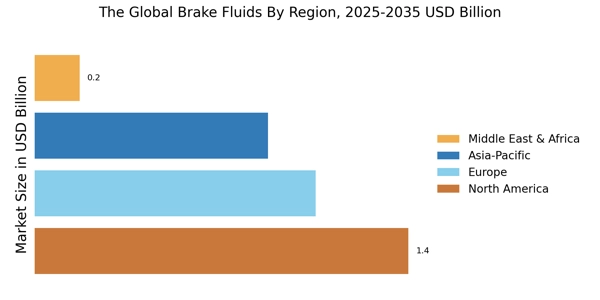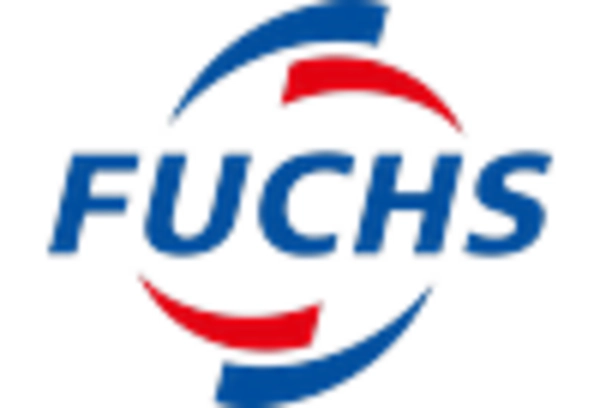Increasing Vehicle Production
The rise in vehicle production is a pivotal driver for The Global Brake Fluids Industry. As automotive manufacturers ramp up production to meet consumer demand, the need for brake fluids escalates correspondingly. In recent years, the automotive sector has witnessed a surge, with production figures reaching approximately 90 million units annually. This increase directly correlates with the demand for brake fluids, as each vehicle requires a specific type of fluid for optimal performance. Furthermore, the expansion of electric and hybrid vehicles is likely to contribute to this demand, as these vehicles also necessitate specialized brake fluids. Consequently, the growth in vehicle production not only stimulates the brake fluids market but also encourages innovation in fluid formulations to cater to diverse automotive technologies.
Growth of the Aftermarket Segment
The growth of the aftermarket segment is a notable driver for The Global Brake Fluids Industry. As vehicle ownership rates rise, the demand for aftermarket services, including brake fluid replacement, is expected to increase. This segment is characterized by a diverse range of products catering to various vehicle types and consumer preferences. Market data indicates that the aftermarket for automotive fluids is projected to grow at a compound annual growth rate of approximately 5% over the next few years. This growth is fueled by factors such as the increasing age of vehicles on the road and the rising trend of vehicle customization. Consequently, manufacturers are likely to focus on developing a wider array of brake fluid products to meet the specific needs of the aftermarket, thereby enhancing their market presence.
Rising Awareness of Vehicle Maintenance
Rising awareness regarding vehicle maintenance is emerging as a significant driver for The Global Brake Fluids Industry. As consumers become more informed about the importance of regular vehicle upkeep, the demand for high-quality brake fluids is likely to increase. Educational campaigns and resources provided by automotive organizations emphasize the critical role of brake fluid in ensuring vehicle safety and performance. This heightened awareness is expected to lead to more frequent fluid changes and maintenance checks, thereby boosting sales in the brake fluids market. Additionally, the trend of DIY vehicle maintenance is gaining popularity, with consumers seeking reliable products to ensure their vehicles operate safely. This shift in consumer behavior is anticipated to create new opportunities for manufacturers to market their products effectively.
Regulatory Compliance and Safety Standards
Regulatory compliance plays a crucial role in shaping The Global Brake Fluids Industry. Governments worldwide have established stringent safety standards for automotive components, including brake systems. These regulations mandate the use of high-quality brake fluids that meet specific performance criteria, thereby driving demand for compliant products. For instance, the introduction of regulations such as the European Union's REACH and the United States' EPA guidelines has compelled manufacturers to enhance their formulations. As a result, the market is witnessing a shift towards fluids that not only comply with safety standards but also offer superior performance characteristics. This trend is expected to continue, as regulatory bodies increasingly focus on consumer safety and environmental impact, further propelling the brake fluids market.
Technological Advancements in Brake Fluid Formulations
Technological advancements are significantly influencing The Global Brake Fluids Industry. Innovations in fluid formulations, such as the development of synthetic and bio-based brake fluids, are gaining traction among manufacturers. These advanced formulations offer enhanced performance characteristics, including improved thermal stability and lower viscosity, which are essential for modern braking systems. The market is projected to grow as these innovations cater to the evolving needs of the automotive industry. For instance, synthetic brake fluids are known to provide better performance in extreme conditions, which is increasingly important as vehicles become more sophisticated. This trend towards advanced formulations not only meets the demands of high-performance vehicles but also aligns with the industry's shift towards sustainability, thereby driving market growth.



















Leave a Comment